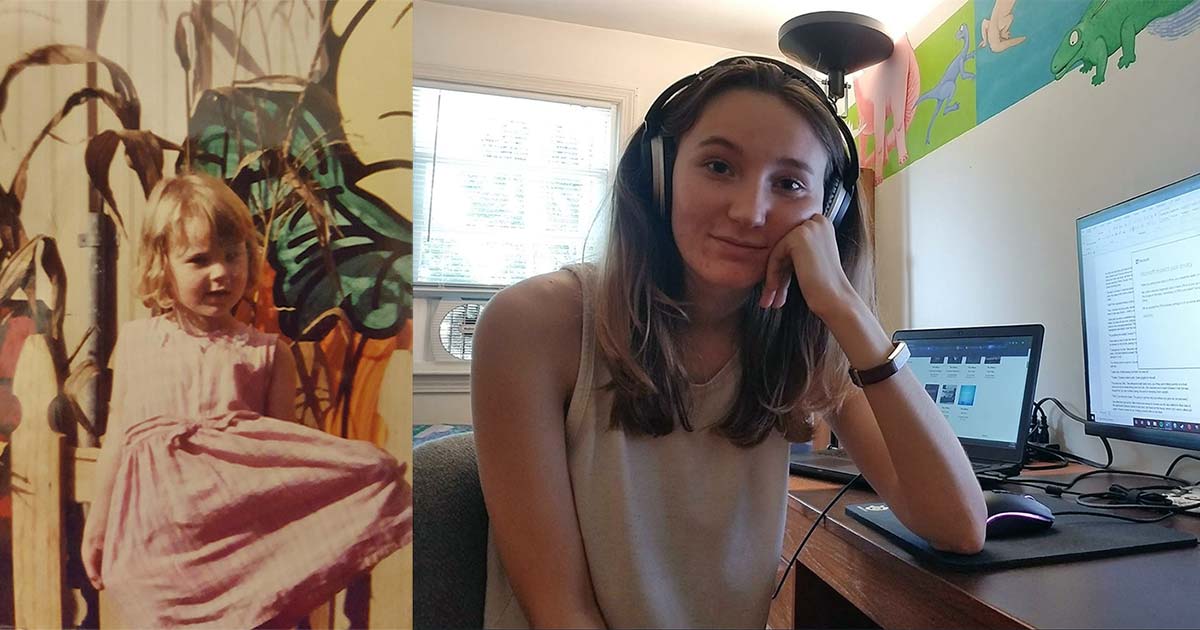Julia LaCava is a summer intern at the Concord Consortium. A senior at Ithaca College, she majors in communications.

When I turned five years old, I ate my birthday cake in the dark. I thought it was odd, but maybe it had something to do with blowing out the candles. I didn’t understand a lot then: why the windows of my house were boarded up with plywood, why I couldn’t go outside, or why it had been raining nonstop for three days.
My fifth birthday was August 13th, 2004, the same day that Hurricane Charley made landfall on the west coast of Florida. The category 4 storm sped through my home state, causing loss of life and tens of billions of dollars in damage. All my family had to show for it was a loss of power and a desperate need for air conditioning again.
What does that early birthday have to do with the Concord Consortium?
I’ve been thinking a lot about natural hazards while working on the GeoHazard: Modeling Natural Hazards and Assessing Risks project, which is developing curriculum materials for middle and high school students. While helping the team think about how to communicate about the materials being developed, I’ve also been thinking more about the hazards and risks I’m facing through the COVID pandemic and the impact it has already had on my life.
From hurricanes to wildfires and viruses, natural hazards are remarkable in their ability to seem unpredictable at first glance, but follow a pattern once understood. Dry shrubs and drought will fuel a wildfire more than a wet forest. Warm ocean water and low atmospheric pressure will create a strong hurricane. Viruses latch onto healthy cells and replicate themselves.
The GeoHazard modules break down floods, hurricanes, and wildfires into the underlying variables responsible for turning these natural phenomena into hazards. Students then assess the hazards for their risks, including their potential impact on people and environments.
It’s ironic to write about risk and impact during one of the strangest times of my life. COVID-19 is different from a hurricane or flood that can be tracked and observed. Although the virus is invisible, we can see it on a map, spreading through the country, creating hotspots all over. The COVID-19 pandemic is holding true to the characteristics of other natural hazards—the unparalleled damage and loss, the human actions that either propel or pause progress, and the overwhelming uncertainty felt by all.
Like an invisible fire, the pandemic is raging across the world, and has forced many students to rethink and reassess their plans. Despite growing up in Florida, I have attended college in the Northeast. With the current strategy of preventing the spread of COVID-19 through state ban lists and the increase of cases in Florida, my school has made the difficult decision not to let me on campus until Florida’s cases decrease.
As a rising senior, with my perfect final year already planned, I have been scrambling to figure out what to do. Do I take all my classes online without waiting for the ban to be lifted? Do I cut my losses and take the semester off, hoping that I will be able to return to campus in the spring? With these questions swirling in my head, my college has recently decided to hold the entire fall semester remotely and I’ll be heading back, completing the first half of my senior year in front of a computer.
The impact this virus has had on me goes beyond my course work. My life has been uprooted since March when colleges sent students home, and I went to Massachusetts to “wait it out.” Now five months later, I still wonder how I will get home to my family safely or when I’ll be able to see any of my college friends again.
I’m stuck, albeit in a more privileged way than others. It’s still frustrating when I leave the house wearing my mask only to see others not taking this seriously, despite the science backing up mask use to combat spread. Without everyone mitigating the risks by wearing a mask or social distancing, the impacts will only continue to grow.
In the GeoHazard curriculum modules, students are able to change conditions in models like the Wildfire Explorer and the Hurricane Explorer and observe how Earth systems like fires and hurricanes are affected. Students can also use tactics to mitigate the impact the hazards have on populations and environments, like adding helitacks and fire lines in the Wildfire Explorer. But there isn’t a fire line for a pandemic, just guidelines and a far-off vaccine.
We’re able to measure the impact of this pandemic in numbers of those infected and lives lost. We also can track human behavior through mask mandates, limiting the number of people that can gather, and contact tracing. But there isn’t a way to measure the emotional effects of these life-changing events, to predict and assess how the impacts will change students like me for years to come.
It’s hard to see what will happen by the next year or even the end of 2020. But understanding how other hazards are studied or treated, as well as the role of humans in mitigating the effects is a kind of comfort for me. In a time when people are grasping at whatever they can for answers, looking at what’s already there may be a place to start.